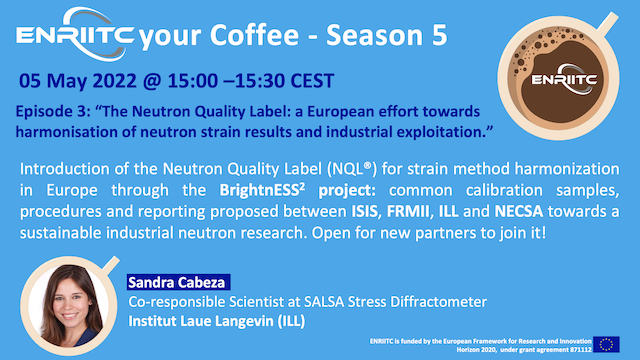Neutron Quality Label standard established by BrightnESS² engineering pilot
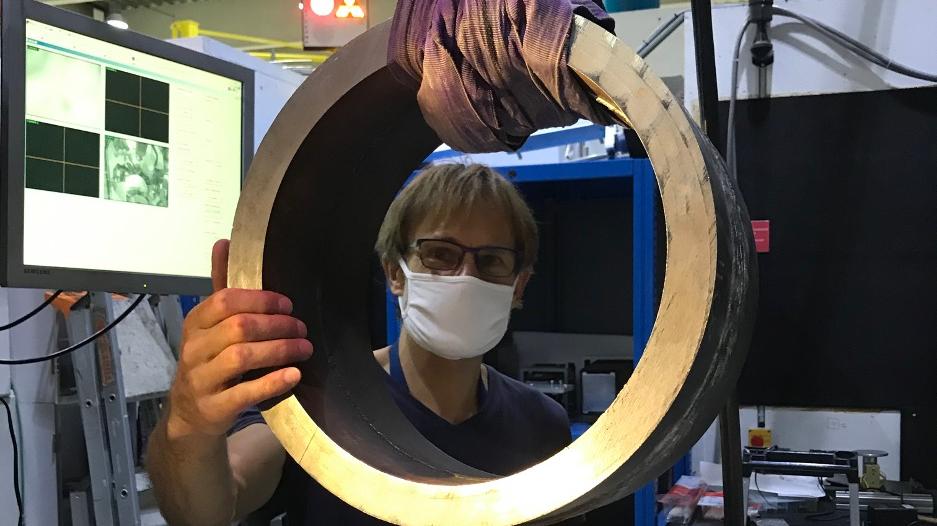
Above: Thilo Perling with the steel cylindrical weld sample on the SALSA diffractometer at ILL. PHOTO: ILL |
The group of scientists who designed and executed the BrightnESS² pilot study are based at four neutron sources: ILL in France, Germany’s Heinz Maier-Leibnitz Zentrum (MLZ), the UK’s ISIS Neutron and Muon Source, and Necsa, the South African Nuclear Energy Corporation. The group has succeed in defining a common set of guidelines for NQL certification through experimental validation on four neutron strain scanning instruments, each in operation at one of the facilities. In 2021, the NQL certification was trademarked for use by the world’s neutron sources. Additional facilities have requested the instrument calibration samples, and licensing of the NQL certification is now being explored at the Australian Nuclear Science and Technology Organisation (ANSTO), and the Paul Scherrer Institute (PSI) in Switzerland, with future participation anticipated at other global facilities, including the European Spallation Source (ESS) in Sweden.
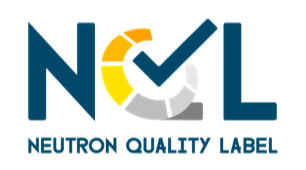 |
Logo for the Neutron Quality Label, trademarked in 2021. |
“An initiative like the NQL is necessary to more fully exploit neutron scattering in the service of industrial R&D, but it is important for another reason,” says former ILL Associate Science Director Mark Johnson, co-leader of BrightnESS²’s work package 2. “Across Europe, and in part as a response to the EU’s Horizon Europe programme, large-scale facilities are becoming increasingly organised and interdependent. You can see this with the recent growth in visibility of consortiums like LENS and ARIE. At the grass roots of this movement are projects like BrightnESS²’s engineering and deuteration pilots, which aim to consolidate scientific activities across facilities and achieve not only practical but political ends as well.”
Neutron Quality Label aims to provide Quality Assurance for global industry
The pilot project has therefore been a great success from the research perspective. The work to make the NQL a relevant certification for global industry, however, is only just beginning. Its success will depend on the ability of the world’s neutron sources operating neutron strain scanning instruments to establish a highly coordinated network that can jointly support sustainable industry access to neutrons. A fledgling organisation, NEUSS (for ‘NEUtron Strain Scanners’), has been established by the pilot’s scientists to develop the network model.
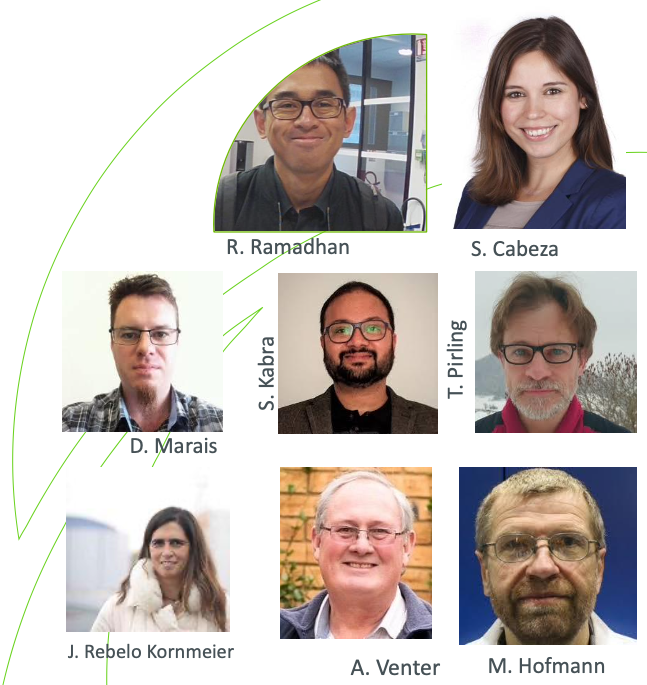 |
 |
The BrightnESS² WP2 engineering pilot team. |
“The NQL is designed for the engineer who must deal with the residual stress data coming from multiple neutron sources and/or experiments,” explains ILL scientist Sandra Cabeza, who leads the pilot project and recently highlighted its results at the 11th International Conference for Residual Stress in Nancy, France. “The NQL seeks the harmonization, reliability and exchangeability of our neutron results, makes them relevant and actionable, and ensures that the entire process is traceable and repeatable. These are must-haves for industrial engineers. Other essentials for industry are ready access to neutron instruments and short turnaround times. By licensing the NQL across all of the relevant neutron sources, the value of the data increases and researchers gain access to more instruments. This lowers some of the cost and access barriers that currently discourage the sustainable use of neutrons by industry.”
The standardisation of neutron diffraction for residual stress analysis has been addressed through previous projects, and an ISO standard is available to serve as general guidance (ISO 21432:2019). Reservations remained, however, concerning the quality or exchangeability of measurements due to the uncertainty of deviations in the positional accuracy between two (or more) instruments, a circumstance further complicated by a lack of consistency in data reporting procedures across facilities. This lack of Quality Assurance has played a significant role in preventing neutron diffraction residual stress mapping from becoming an established technique for industry.
The NQL framework solves both of these problems by ensuring the repeatability of experiments and the traceability of results, advantages essential to winning the confidence of industry. Moreover, the NQL protocols provide the tools for neutron scientists to work closely with industrial partners in order to match each case study to an available instrument across multiple facilities. This gives neutron facilities the ability to respond to industrial demand in a timely manner, leading to better research outcomes and cost savings for both parties.
Interchangeable instruments and exchangeable data advance innovation with neutrons
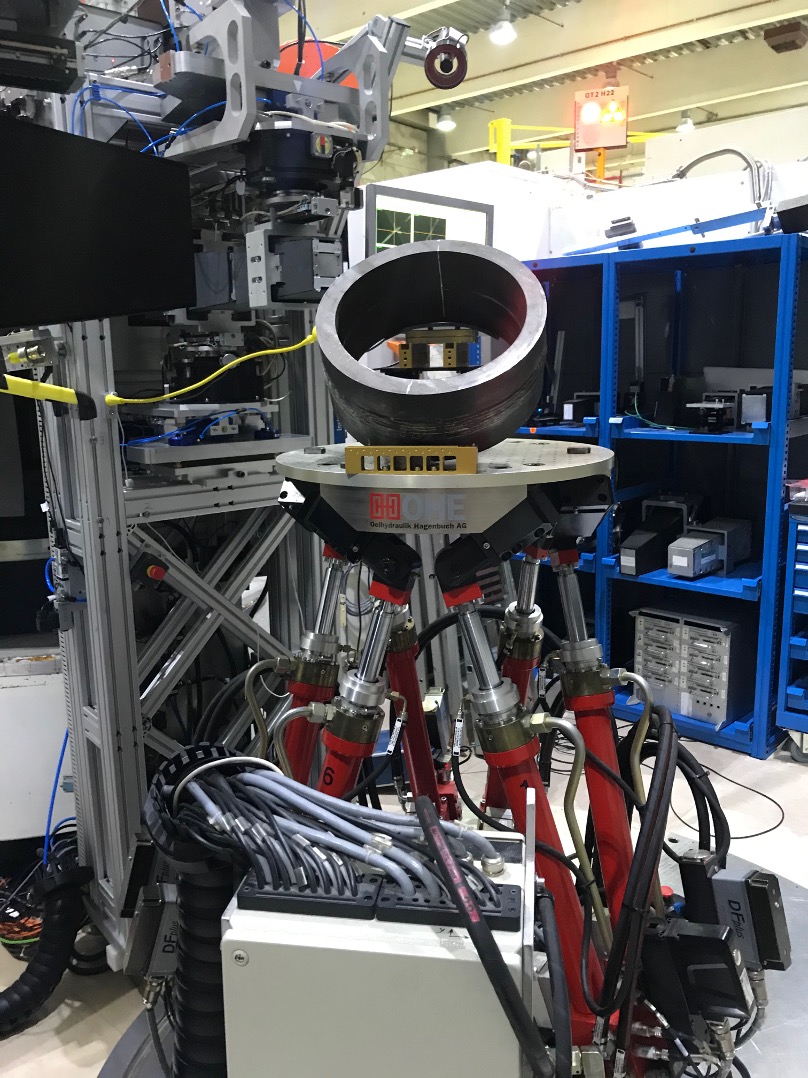 |
Steel cylindrical weld sample on the SALSA diffractometer at ILL. PHOTO: ILL |
Apart from the validation lent to research results by the NQL itself, the detailed reporting template developed by the project—including instrument parameters, neutron beam characteristics, and details on the setup of the experiment—can be passed between engineers and researchers much like a medical case file. The ‘paperwork’ follows the physical sample—the patient—from researcher to researcher and even facility to facility, containing all the information necessary to validate past outcomes and move quickly toward new ones. This economy of work has the potential to create a pool of users that form a sustained relationship with neutron labs, working in a continuum rather than establishing a new relationship and experience at each facility. The gain in efficiency for both actors is clear.
“Industry has not yet found a way to fully exploit the potential of neutron science the way it has with x-rays, though we know there is a great deal to be gained by developing this relationship,” says Vincent Robin, research engineer at Électricité de France (EDF) in Paris. “The NQL is a big step in that direction, and it is great to see projects that directly address our concerns, moving us closer to making neutrons a routine tool in industrial R&D.”
The manufacturing sample chosen for the pilot study was a welded fine-grain steel pipe broadly used for applications in power generation for the energy and transport sectors. The sample was chosen in collaboration with, and provided by, the global energy giant EDF. The same pipe section was submitted to measurements on the neutron diffractors ENGIN-X at ISIS, SALSA at ILL, STRESS-SPEC at MLZ, and MPISI at Necsa. These measurements served both to verify the feasibility of a cross-facility NQL by benchmarking the positional accuracy between instruments and to validate the established calibration and reporting protocols.
Ultimately, the experimental results of the pilot project demonstrated the interchangeability among the four instruments and the exchangeability of their results, which provides the basis for the NQL certification. This coordination across instruments also presents industrial engineers with a number of appealing options for the use of neutrons, enabling researchers to optimise their use of a single instrument or to use multiple instruments to drill down into more precise or idiosyncratic results for a novel application. The results of these neutron scattering measurements are used as direct inputs to component design, materials selection, the optimisation of manufacturing processes, and as benchmark data for digital simulations—all part of a €100 billion per year industry in the development of metallic structures.
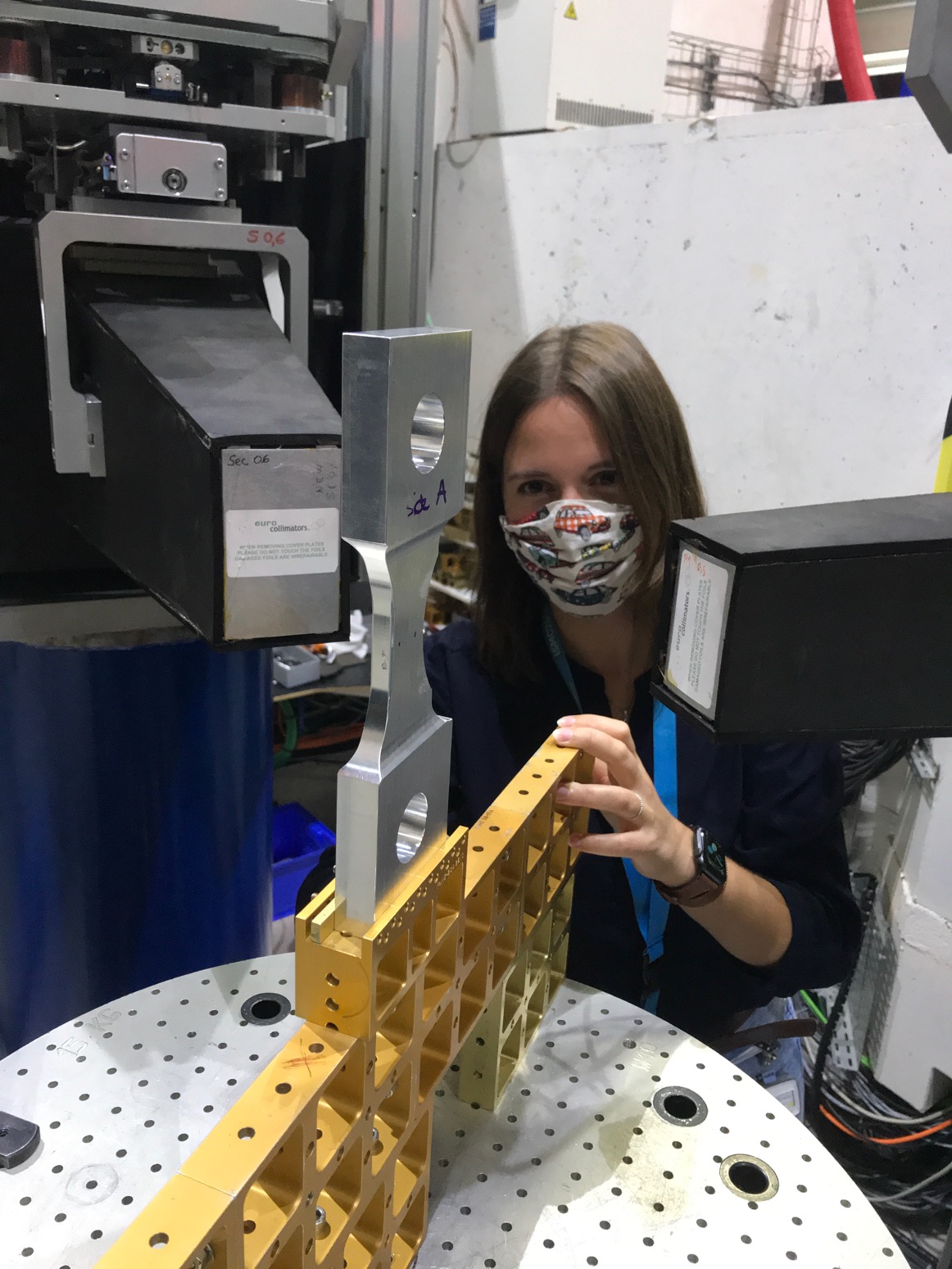 |
Sandra Cabeza, ILL, with an aluminum alloy sample provided by Airbus. PHOTO: ILL |
Leveraging the pilot’s success for an increased use of neutrons by industry
In addition to EDF, the pilot team has conferred with global industrial technology leaders including Rolls-Royce, the aerospace behemoth Airbus, and the world’s leading steel producer ArcelorMittal. Further cooperation and testing of samples with other widespread applications is anticipated. One exciting feature of the NQL is that it is also adaptable to benchmarking by other investigative methods, including X-ray synchrotrons, the industrial workhorses of Europe’s large-scale facilities. To expand the pilot project’s reach, Cabeza and other members of the team are also involved in EASI-STRESS, another EU project aimed at promoting the industrial use of residual stress characterisation at both synchrotrons and neutron sources.
The BrightnESS² engineering pilot project outcomes were not a foregone conclusion, and the team was very satisfied by the result: “When you design a project like this, of course you expect it to follow the course you have set for it and expect it to succeed,” explains Andrew Venter, diffraction section leader at Necsa’s SAFARI-1 research reactor. “On the other hand, the reason you do such a project is because it has not been done before, and you do not know for certain that your idea is valid. You must prove this to a standard that satisfies others. Different neutron sources, neutron instruments and neutron experiments have many complex parameters, all influencing one another, and each must be accounted for if one hopes to standardise any method in this field. We have done this successfully for our four neutron strain scanners, and we hope to include many more in order to facilitate wider use of neutron scattering in industry and academia.”
___________________________________________
There will be an opportunity to hear more about the BrightnESS² engineering pilot and the Neutron Quality Label in an upcoming interactive webinar. Sandra Cabeza will present as part of season 5 of #ENRIITCyourCoffee on Thursday, 5 May:
R.S. Ramadhan, S. Cabeza, T. Pirling, S. Kabra, M. Hofmann, J. Rebelo Kornmeier, A.M. Venter, D. Marais, Quantitative analysis and benchmarking of positional accuracies of neutron strain scanners, Nuclear Instruments and Methods in Physics Research Section A: Accelerators, Spectrometers, Detectors and Associated Equipment, Volume 999, 2021, 165230, ISSN 0168-9002, https://doi.org/10.1016/j.nima.2021.165230. ISO 21432:2019 NDT— Standard test method for determining RS by neutron diffraction

